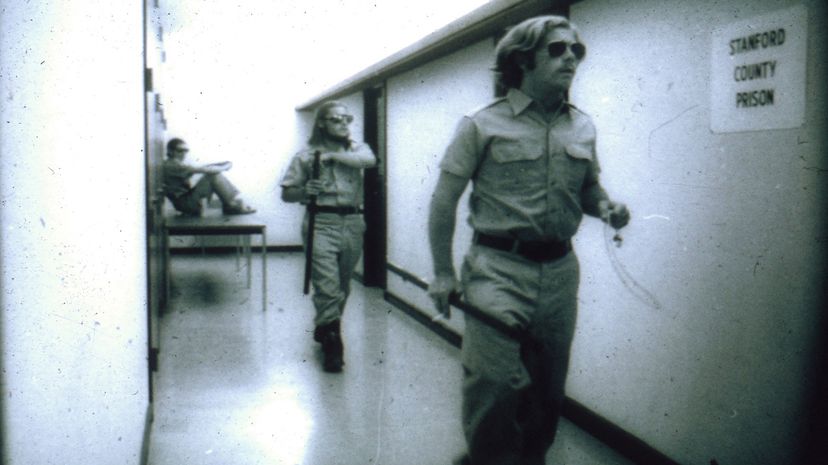An Infamous Experiment

The Stanford Prison Experiment is so well-known that even people who've never taken a course in psychology have heard of it, and anyone who does study psychology learns about it in introductory courses. The events of the experiment are told and retold among social scientists and people interested in human behavior like a spooky campfire story.
Philip Zimbardo carried out the experiment, which was funded by the U.S. Office of Naval Research, in August 1971 at Stanford University. The applicants took psychological tests to ensure they were "average," or didn't have psychological disorders or medical conditions. The researchers recruited two dozen male college students using advertisements in newspapers, paying them $15 per day to spend two weeks in a mock prison. They were randomly divided into groups identified as either guards or prisoners, and the prisoners were "arrested" at their homes without warning by real cops and booked at the Palo Alto police station before being taken to the mock prison. The guards weren't instructed how to do their jobs, but they did create a list of restrictive rules the prisoners had to follow, including remaining silent during rest periods and not using each other's names. Zimbardo (acting as prison superintendent) and a team of researchers (one of whom acted as warden) observed the experiment.
Advertisement
The results were horrifying. The guards adopted a rapidly escalating pattern of humiliation and dehumanization against the prisoners. They turned the prisoners against each other and imposed increasingly bizarre punishments, held in check only by the researchers' rule that no physical violence was allowed. Five prisoners were released early because they suffered serious emotional breakdowns or physical problems [source: Zimbardo]. The other prisoners meekly submitted to whatever treatment the guards dished out and eagerly turned against one another at the prospect of a reward, such as being allowed to sleep in a cell with beds and blankets instead of on the concrete floor. The participants became so invested in their roles that the entire experiment was halted after just six days, when Zimbardo realized it was spiraling out of control.
The lesson of the Stanford Prison Experiment seems pretty obvious: There's a cruel streak inside all people, a latent evil waiting to be unleashed should they be given the slightest hint of authority and power. By the same token, the results of the experiment could show that people are driven to obey, conform and respond to authority with submission and compliance. It's a profound and disquieting statement about human nature that 24 "average" young men could be so easily and quickly twisted.
But things aren't really so simple. The lessons to be learned aren't confined to "guards" and "prisoners," but extend to prisons and other powerful institutions, and even to the ways scientists conduct experiments on human behavior. What really happened at the "Stanford County Prison"? Let's find out.